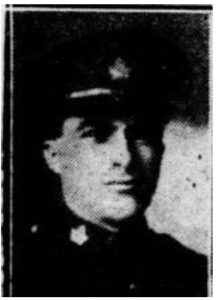25th Battalion (Nova Scotia Rifles), Canadian Infantry

George William Milner was born in Addingham, Yorkshire on 29 October 1888, one of four children born to Henry Robert Milner (a pharmacist) and his wife Mary. By 1901 the family had moved to Gloucester and George was educated at the Crypt School.
In 1903 (or thereabouts) he emigrated to Canada and went into farming on a large ranch near Calgary, Alberta. Upon the outbreak of war, he immediately answered the call for recruits to fight for ‘the old country’. After a period of training, he was sent back to the ranch for a year to grow wheat, eventually enlisting in Calgary on 17 November 1915.
After about six months training he embarked from Halifax, Nova Scotia on 2 June 1916, arriving at Liverpool on 8 June. He had trained with 89th Battalion, made up of Albertan recruits but upon arrival in the UK was assigned to a reserve battalion, with a view to providing reinforcements for units in France and Flanders.
In the same month he was sent for machine gun training.
On 6 December 1916 he joined the 25th Battalion, Canadian Infantry in the field. At around Christmas he suffered gas poisoning and spent over two months receiving treatment, before returning to his unit on 18 March 1917.
The 25th Battalion was part of 5 Brigade, 2nd Canadian Division. On 9 April 1917 all four Canadian Divisions were part of the British First Army, attacking Vimy Ridge, as part of the Arras Offensive.
The battalion was deployed in the centre of the attack, setting off from east of Neuville St Vaast towards the village of Thelus and Hill 135. Despite the swirling snow storm the attack was very successful; 25th Battalion achieved all its objectives and captured 390 prisoners plus four machine guns.
Despite the tremendous success of the Canadian Divisions in capturing Vimy Ridge, casualties were still high. 2nd Canadian Division recorded about 800 killed in April 1917.
Private Milner was one of the unfortunate ones, being badly wounded on the 9 April. He was taken to No 18 Casualty Clearing Station at Lapugnoy, near Bethune but there was nothing that could be done to save him and he died on 11 April, aged 28 and was buried in the nearby Lapugnoy Military Cemetery. He is commemorated on the Gloucester War Memorial.
Research by Graham Adams
